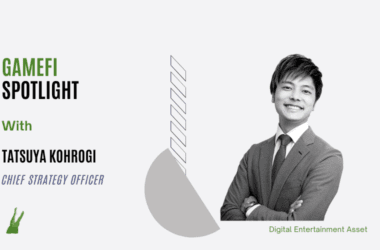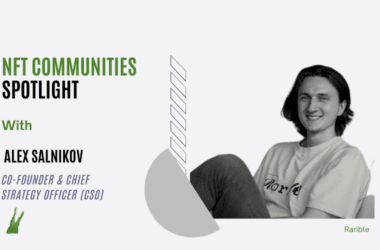Quick take:
- Bains says his team sees Solana as the most adept blockchain for gaming.
- Bains expects Web3 gaming to grow parallel to mainstream gaming in the same way mobile games have done since 2010.
- Pavel also wants blockchain game developers to ditch Web 2.5 — mass adoption “nonsense” and focus on building crypto-native games.
Over the past few weeks, Solana has been dominating the headlines for all the good reasons. From the surging price of the BONK meme coin to spiking sales for its Web3 mobile phone Solana Saga, it has been a great start to the year and a good end to 2023 following a challenging year for the layer-1 blockchain.
DeGods and y00ts departure at the end of 2022 capped a difficult period for Solana amid the FTX debacle.
In 2023, Solana became one of the leading blockchains for institutions looking to explore opportunities in Web3. Collaborations with Mastercard, Visa and Shopify are just a few to point out.
But sticking with Solana through the tough period and the good times has been the team behind the blockchain game MixMob, which just released its first game on Solana, Racer 1, a card-based strategy racing game that allows players to gamble on matches or races to earn tokens.
MixMob has continued to build on the platform encouraged by the promise of the technology the layer-1 blockchain offers. “Our team remained bullish on its tech for what it can do for games,” Pavel Bains, the executive producer of MixMob tells NFTgators.
“For what we need blockchain to do, Solana excels,” he said. And that includes NFTs, proof of wins and losses, DeFi in our racing arenas, soul-bound tokens, and more. All that a blockchain game needs for “an amazing user experience.”
MixMob’s last fundraising of $7 million in a seed round came in early 2022 when buzzwords like blockchain games, NFTs, and the metaverse were trending. Things turned out differently in 2023, making it a challenging market to raise new capital.
Pavel thinks it is time for Web3 builders to focus on what they think a retail token buyer and their community want. “Target them and raise through the public even if it’s a small amount to start,” he said.
Last month, the company launched a pre-sale of its MXM token which attracted participation from Arthur Hayes, Solana, Alex Svanevik, Darren Lau, Maven Capital, Genblock Capital, IOSG Ventures, and Shima Capital.
In this Q&A Pavel Bains discusses his strong background in gaming, early beginnings in crypto and why Solana excels in blockchain gaming.
Please tell us about your journey in Web3 and your role in MixMob.
I was in the video games business until I went full-time crypto in 2016. In 2018 my co-founder and I launched Bluzelle, a decentralized storage layer for Web 3. We went through the bear market from 2018-2020 so we learned a lot.
In 2021 as crypto gaming started coming up I was able to merge my two passions by co-founding MixMob with Simon Vieira (MixMob CEO and Game Director) and Juan Arenas (Art Director).
My role at MixMob is Executive Producer where I look after strategy, fundraising, finance and high-level partners. I connect the dots. It’s not a day-to-day operations role. All credit for that goes to Simon and Juan.
Tell us about your experience in building games on Solana.
Despite Solana going through their challenges in 2023, our team remained bullish on its tech for what it can do for games. They don’t see other chains as being adept for it like Solana is. For what we need blockchain to do, Solana excels.
This includes UGC with NFTs, proof of wins and losses, DeFi in our racing arenas, soul-bound tokens, and more. These all help balance the game and give the user an amazing experience.
What would you say is the biggest challenge to bringing blockchain games to the mainstream?
I think people spend too much time in blockchain games and crypto in general for mainstream acceptance. We are early stage and it’s a niche but powerful market. Focus on that. Having come from gaming I saw in 2010 how us in console games looked down on mobile.
What we didn’t get was that mobile games weren’t trying to get console gamers to switch, mobile games created a new category targeting mid-core and casual players. This segment ended up growing massively.
We see Web 3 gaming doing the same. It presents a new category which will grow over time and attract more players.
How does MixMob address that challenge?
We focus just on the crypto-natives. They understand the tech and the learning curve is shorter. Plus majority of crypto natives are gamers. We just need to deliver what they want, which are the following:
1. Have fun
2. Ability to earn money
3. Speculate
4. Owner their assets
What steps would you like to see the blockchain gaming industry take in 2024?
We really like to focus on our own product and what we can do to make it a success and reward our players. But I would like to see blockchain gaming studios stop pandering to the masses and stating they are Web 2.5 or some nonsense like that. Either be in crypto or not. As they said in Breaking Bad, “There are no half-measures”.
Where do you see the Web3 industry overall in five years?
16-year-olds now will be 21 in 5 years. During that time they will see how we’ve all created a parallel track for them to opt into. We’ve established finance through DeFi, art and IP through NFTs, and in the next two years, gaming will be a pillar. So in 2029, you’ll see a big wave of the current 16-year-olds moving into crypto simply because it is easier for their digital lives. This will be a seismic shift for everyone.
MixMob last raised funds in a seed round announced in February 2022. How has fundraising for blockchain games changed since then?
Throughout 2023 it was abysmal. Crypto VCs that were the biggest risk takers suddenly became what they despised, Silicon Valley VCs. Focused on the wrong numbers, always moving the target, and frankly a bunch of excuses to say no. It would be better for them to admit that they were scared of the bear market and didn’t really know what to do. LOL.
My advice now to new builders is to not pander to VCs and what they want. They don’t know. Focus on what you think a retail token buyer and your project community want. Target them and raise through the public even if it’s a small amount to start.
****
Stay up to date:
Subscribe to our newsletter using this link – we won’t spam!





